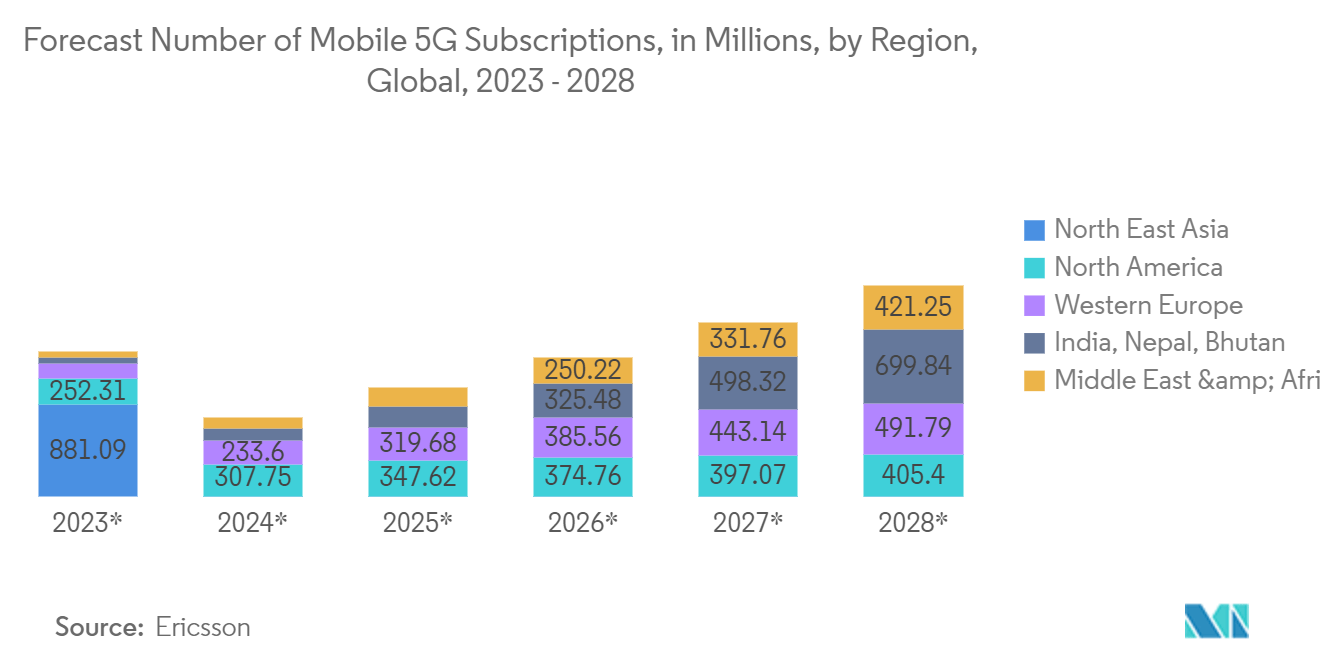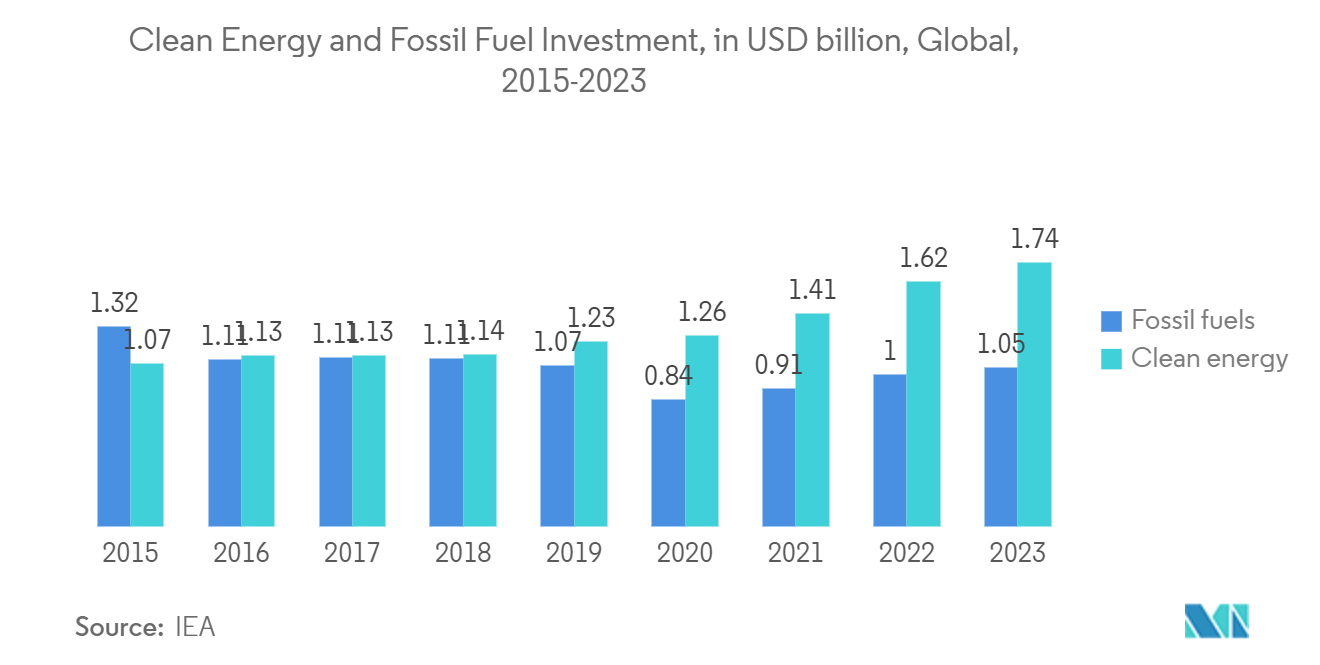Market Trends of Semiconductor Industry
Discrete Semiconductors to Hold Significant Market Share in the Semiconductor Devices Segment
- The rising demand for high-energy and power-efficient devices, the increasing prevalence of wireless and portable electronic products, coupled with the increased use of these devices in the automotive industry due to the shift towards electrification are some of the key factors driving the growth of the segment.
- One of the significant trends in discrete semiconductors is efficient power management. New system architectures are improving the efficiency of AC-DC power adapters while simultaneously reducing the size and component count. New standards for Power-over-Ethernet (PoE) allow higher power transfer, which enables the development of new classes of devices, like connected lighting.
- MOSFET has always played an important part in the telecom sector, as switching power supply is the most prevalent application for power MOSFETs, which are also commonly utilized for MOS RF power amplifiers, allowing mobile networks to move from analog to digital. According to Ericsson, the number of 5G subscriptions increased by 70 million during the first quarter of 2022, reaching about 620 million. By the end of 2022, the number is predicted to reach 1 billion. Such reasons will spur the demand for power semiconductors, which will increase the demand for MOSFETs and lead to several breakthroughs in the telecom sector.
- Further, the demand for IGBT among various discrete semiconductors has been gaining traction and is widely used in low-power converters. The most popular semiconductor switches for power conversion in automotive, other motor drives, and renewable energy systems are discrete IGBTs. The main driving force is also the growing use of Insulated Gate Bipolar Transistor (IGBT) devices across a variety of sectors, including automotive, consumer electronics, industrial, IT and communications, healthcare, aerospace and defense, and others.
- The majority of discrete IGBT applications include inverters, various consumer goods like air conditioners and washing machines, switching-mode power supplies (SMPS), which are components used in personal computers, welding equipment, and induction heating devices like microwaves, electric cookers, induction stoves, etc. for soft switching and strobe flash control. The increasing demand for consumer electronic appliances like UPSs, power conditioners, air conditioners, etc., which use discrete IGBT types for lower-current applications, is credited with driving the growth of the discrete IGBT market. Discrete IGBTs have been found to have the lowest power losses in consumer goods, which is anticipated to be a key factor influencing the segment's growth in the market.

Fabrication to Hold Significant Market Share in Semiconductor Materials Segment
- Semiconductor fabrication materials form a crucial building block for the advanced microelectronics found in consumer electronics, high-end data centers, automotive applications, medical devices, IoT devices, power electronics, and more. The segment covers materials like process chemicals, photomasks, electronic gases, photoresist ancillaries, sputtering targets, silicon, and other materials.
- One of the primary factors driving the demand for semiconductor fabrication materials is the increasing use of digitally integrated ICs in the electrical, electronics, automotive, and telecommunication industries. Additionally, the rising investments in the energy sector are also expected to contribute positively to the growth of this segment, owing to the widespread application of semiconductors in solar panels, drives, and pumps in wind and water turbines, and protection circuits in energy conversion to ensure efficiency and minimal power loss. For instance, as per IEA, global energy investment will increase by 8% in 2022 to reach USD 2.4 trillion. Furthermore, according to IRENA, the spending on renewable energy is expected to grow steadily, boosting the market.
- While a wide range of materials can exhibit semiconductor properties, some materials are more commonly used in the fabrication of electronic devices due to their specific characteristics. Two of the most prevalent semiconductor materials are silicon and gallium arsenide. Silicon is the most widely used semiconductor material, primarily due to its abundance, low cost, and relatively stable properties at high temperatures. The electric conductivity of silicon is around 1000 S/m. Additionally, silicon has a well-established fabrication infrastructure, making it an attractive choice for manufacturers. However, silicon does have some drawbacks, such as lower electron mobility compared to other materials, which can limit the performance of high-speed devices.
- Gallium arsenide is another popular semiconductor material, valued for its higher electron mobility and direct bandgap. These properties make it well-suited for optoelectronic applications, such as lasers and solar cells. However, gallium arsenide is more expensive and less abundant than silicon, which can limit its widespread adoption. Another drawback of gallium arsenide is that it exists intrinsically as a semi-insulator rather than a semiconductor with an electrical conductivity of 0.000001 S/m.
- Aside from silicon and gallium arsenide, researchers are continually exploring new materials with promising semiconductor properties. These materials include aluminum nitride, carbon nanotubes, and many other materials that have the potential to revolutionize the industry. As the understanding of these emerging materials grows, they will likely play an increasingly important role in the future of semiconductor fabrication.
- Moreover, the market for process chemicals is expected to grow steadily due to the low-cost method and the applications for internal efficiency in the semiconductor sector. The consumption of semiconductor process chemicals is fueled by growth in installed fabrication capacity and expensive chemicals consumed by new technology, as well as processed silicon wafer surface area.


